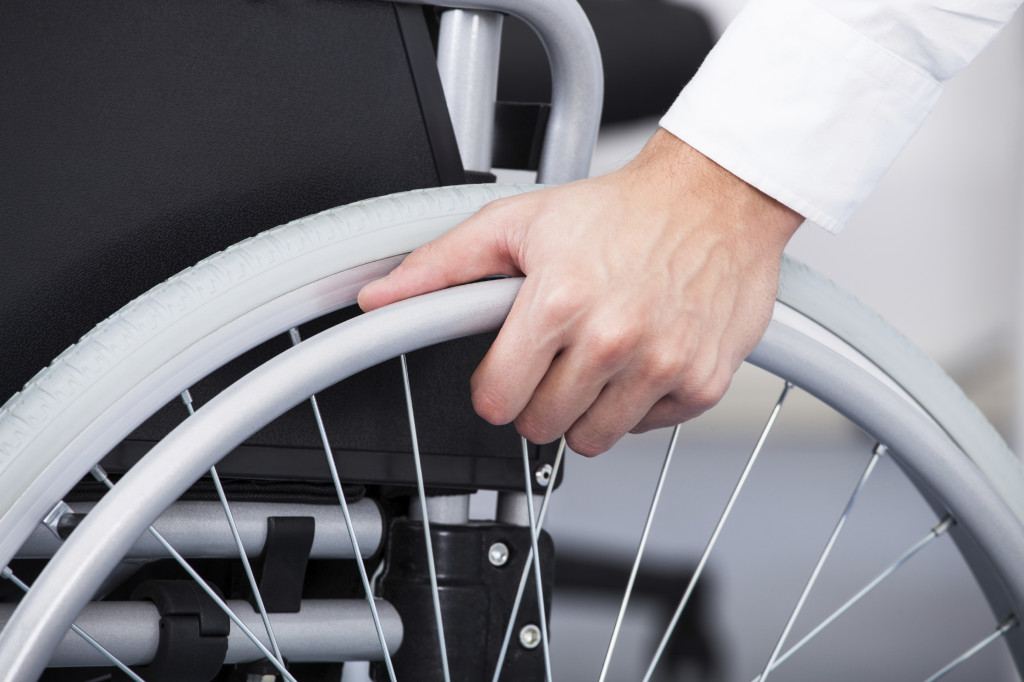
Muscular Dystrophy (MD) is a group of debilitating conditions. There are a wide range of conditions which can affect mobility, and we’ve already covered some of them previously on this blog.
In addition to Multiple Sclerosis, joint hypermobility and arthritis, Muscular Dystrophy (MD) is another problem affecting mobility. Around 70,000 people in the UK have an MD related condition, with a wide range of age groups being affected.
So, what exactly is MD? How does it affect the quality of life of a sufferer?
What is Muscular Dystrophy
MD is one of the most serious, progressive conditions that affects muscle groups in the body. Over time, the muscles in the body start to weaken, making it increasingly difficult for an individual with an MD related disorder to move around.
As MD affects the muscles, this can often make the condition life threatening for many people, especially if the muscles of the heart or around the lungs start to fail.

There is no current cure for MD, but there are a variety of treatments available which can help alleviate and manage some of the symptoms.
MD is also genetic, meaning that sufferers usually inherit the condition from their parents. There are tests available for people who have a family history of the condition to assess the risk of them developing the condition.
The Types of MD
MD isn’t just one condition. In fact, there are several types of MD which can affect mobility and quality of life; some being more severe than others.
Duchenne MD is the most common form of MD and sadly it is one of the most fatal. Many people with this form of MD are male and are diagnosed during their early childhood. Their life expectancy is usually around 20 or 30 years.
People who suffer from Duchenne MD may find it difficult to stand up, walk or speak and may experience breathing difficulties as the condition progresses.

Myotonic MD is the second most common MD related condition in the UK, affecting around one person in every 8,000. Unlike Duchenne MD, Myotonic MD can develop at any stage of life, no matter what age you are. It isn’t necessarily life threatening, but more severe cases can possibly effect a sufferer’s life expectancy.
People suffering from Myotonic MD may complain of chronic muscle stiffness, develop cataracts in their eyes, have an irregular heartbeat which is a lot slower than normal and feel fatigued more often than non-sufferers.

Facioscapulohumeral MD is the third most common MD condition in the UK. It is slow in progressing and is another condition that can develop at any age.
Many of the symptoms of facioscapulohumeral MD are hard to spot, and many sufferers can go years without an official diagnosis. However, as the condition progresses, sufferers may notice a weakening of the muscles in the face, shoulders and upper arms, as well as in their calves and upper backs. These symptoms can often occur unevenly, so one side of the body may be unaffected while the other suffers.
Can It Be Treated?
As mentioned above, there’s currently no cure for any MD related condition. There are treatments which can help manage the symptoms, but each case must be looked at on an individual basis and will depend on the type of MD that a sufferer has.

The NHS has a page on the available treatments which includes:
- Low impact exercises
- Physiotherapy
- Living with mobility aids such as wheelchairs and stairlifts for safe movement.
- Creatine supplements
If you have a loved one suffering from this debilitating condition and want to help them remain independent in their home for longer, don’t hesitate to get in touch with us here at ALS. Our selection of stairlifts is sure to have a unit that is suitable for your needs.
Read our other condition spotlights:

